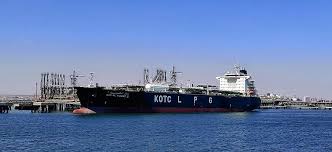Air Products, ACWA Power and NEOM, have announced the signing of an agreement for a $5 billion world-scale green hydrogen-based ammonia production facility powered by renewable energy. The project, which will be equally owned by the three partners, will be sited in NEOM, a new model for sustainable living located in the north west corner of the Kingdom of Saudi Arabia, and will produce green ammonia for export to global markets.
The project will include the integration of over four gigawatts of renewable power from solar, wind and storage; production of 650 tons per day of hydrogen by electrolysis using thyssenkrupp technology; production of nitrogen by air separation using Air Products technology; and production of 1.2 million tons per year of green ammonia using Haldor Topsoe technology. The project is scheduled to be onstream in 2025.
EnAcumen has analysed the use of ammonia as a green hydrogen carrier in depth, concluding that it has great potential as an enabler of international trade in green energy. This announcement further validates the importance of ammonia as part of the emerging hydrogen economy.
Why ammonia?
In the new energy system where large-scale, low-cost renewable generation is located far from end users, the ability to transport this energy over long distances becomes essential. Hydrogen is widely recognised as a means of storing large amounts of renewable energy but, its low volumetric density makes it very expensive to transport, even when compressed to high pressures or liquefied.
To overcome this disadvantage, a number of hydrogen ‘carriers’ have been considered. Amongst the available options, ammonia, in liquid form, is a carbon-free hydrogen carrier with a high content of hydrogen. A number of studies have indicated that converting hydrogen to ammonia as a means of transporting it over long distances would have lower costs than transporting it as hydrogen. For example, The IEA suggests that for a number of regions, hydrogen imports in the form of ammonia could be cheaper than domestic production.

EnAcumen analysis
In a recent feasibility study as part of the UK BEIS Hydrogen Supply Programme, members of the EnAcumen team assessed the costs of using ammonia produced in the Middle East from low cost renewables for the supply of hydrogen transport fuel in the UK.
The feasibility study determined that the total cost of shipping ammonia from Qatar through the Suez Canal to the UK (6,266 nautical miles) in a typical dual purpose LPG/ammonia very large gas carrier containing 60,000 tonnes would be £5.37/MWh (£0.18/kg H2) including canal fees, port costs, insurance and return of the empty vessel. All-in costs for an end-to-end process with hydrogen produced in the Middle East and delivered to the UK using ammonia as a hydrogen carrier could amount to approximately £100/MWh (HHV), or £3.35/kg. This is significantly lower than the cost of generating green hydrogen in the UK.
Further information on this analysis is available from EnAcumen.
